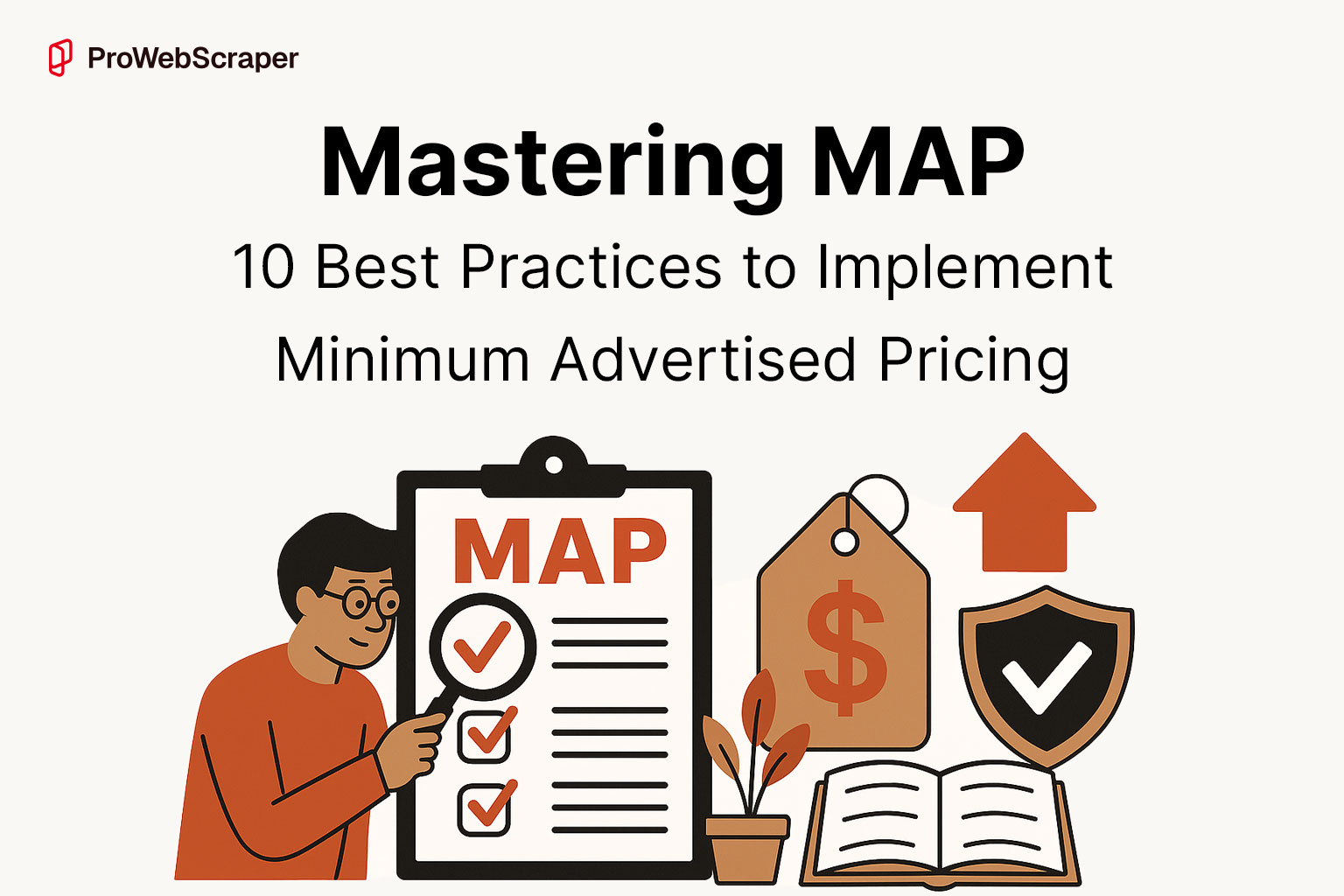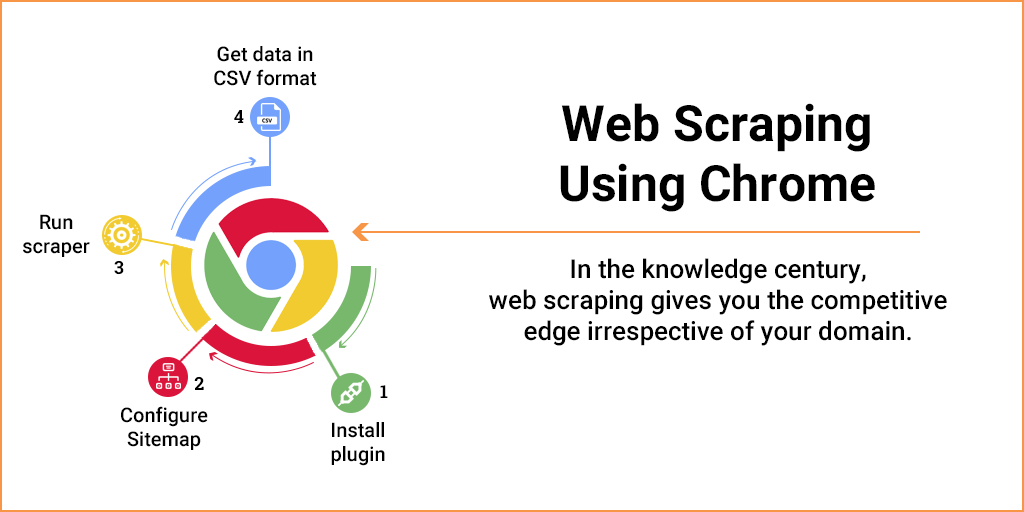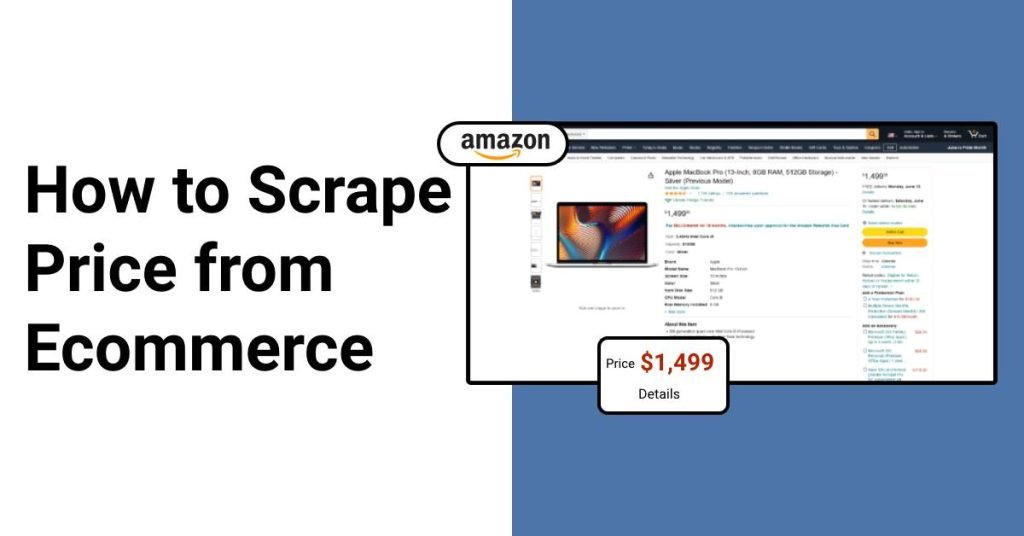
Introduction
If you are concerned about violation of your MAP policies in the e-commerce marketplace and unauthorized sellers adversely affecting your brand, you are not alone.
Many brands face the same challenge in e-commerce today.
The good news is that there are ways to monitor and enforce Minimum Advertised Price (MAP) policies. Here’s how you can go about it.
Understanding MAP and MSRP
Before we get started with what you can do, let’s define the terms quickly:
- MAP (Minimum Advertised Price): The lowest price at which a retailer can advertise a product.
- MSRP (Manufacturer’s Suggested Retail Price): The price at which a manufacturer recommends retailers sell a product.
The MAP draws the line for price and the MSRP tells you how high you can keep the price. Both are important but MAP is what you seek to enforce and vital for sustaining your brand image and value.
Why MAP Matters
MAP matters because it provide some key benefits:
🛡️ Protect and sustain brand value and reputation
⚖️ Enforce level playing field and fair competition among retailers
💰 Ensure decent profit margins
🤝 Maintain professional relationship with authorized sellers over time
🚫 Tackle unauthorized sellers and grey market goods
10 Essential Best Practices
1. Craft a Crystal-Clear MAP Policy
If you want them to follow MAP policy, there should be a policy in place and it should be something that even a child can understand and follow. In other words, make sure, you have a clearly defined MAP policy for all stakeholders and it should have the following:
- Clear definition of expected behavior and what will be considered a violation
- Well-defined implications and consequences for non-compliance
- A process for handling “false positives”
- A clearly laid out appeals process
- Scope of the policy (e.g., does it cover online only, or in-store advertising too?)
🔑 Key point: Make sure your policy is a clear statement outlining a set of rules that define the violation and possible consequences, rather than a two-way agreement. This is vital for legal compliance.
Example: “Acme Inc. reserves the right to discontinue sales to any reseller that advertises Acme products below the specified Minimum Advertised Price.”
💡 Pro tip: Don’t use legal jargon that make it difficult to read and follow. Your reseller is not a legal expert; he/she is a layperson. So define it in simple and unambiguous terms.
2. Price It Right: Balancing MAP and MSRP
When it comes to pricing, e-commerce is like walking a tightrope. Balance is the key. To strike the right balance and work out the optimal minimum price, take the following into account:
- In-depth market research and its findings
- Diverse competitor pricing strategies
- Your particular brand positioning
- Profit margins for both you and your retailers
- Possiblel use of dynamic pricing for flexibility
MAP does not exist in isolation; it should have a clear correlation to MSRP. As a thumb rule, MAP is commonly set 20–30% below MSRP which enables retailers to have some pricing window within which they can operate. However, they still have to follow the minimum price so that the brand value of your company is maintained.
📊 Did you know? Surprisingly, a Harvard Business Review study found that unauthorized retailers violate MAP policies 50% of the time, as against authorized retailers who had a 20% violation rate.
3. Communicate Your Policy Effectively
Having a clear policy is one thing and many companies may have it. Communicating it and effectively so is a different ball game. Communicating it effectively holds the key because it serves as a preventive mechanism and may deter many from violating MAP.
How do you go about it then? Here’s what you can do:
- Email it to all existing and potential retailers
- Upload it on your website and display it prominently on partner/reseller section
- Make sure it is included in all onboarding materials for new resellers
- Make sure your sales team keeps articulating and discussing it with partners on a regular basis.
- Issue a press release to relevant industry trade media
- Create an FAQ section about your MAP policies and upload it on website
💡 Pro tip: Take Nike’s approach for example. They are not only clear in communicating it but also offer incentives for compliance. It obviously creates awareness and motivates people to comply with it.
4. Implement Robust Monitoring Systems
Most companies have MAP policies in place. However, most companies differ in the way they monitor it. To get a better outcome of your MAP policies, you need to implement a robust monitoring system that ensures compliance. In simple terms, you cannot enforce MAP if you cannot effectively monitor it.
MAP monitoring requires the following:
- Monitor prices on not just one but multiple online marketplaces and individual retailer websites
- Check prices frequently and at uneven intervals
- Track in-cart pricing and special offers
- Have the provision for real-time alerts for violations
- Employ the mechanism to capture screenshots as evidence of violations
Online marketplace is like an ocean. Merely tracking Amazon and Walmart will not be enough. Moreover, manually monitoring it will not neither suffice nor work. You need a way to monitor not only the e-commerce majors like Amazon and Walmart but also smaller e-commerce sites and even social media marketplaces.
🔍 Fun fact: There are sophisticated software like ProWebScraper that check prices up to 8 times a day. That’s many times more efficient and frequent than solutions that only check 1-4 times daily, ensuring you don’t miss a single violation.
5. Establish Consistent Enforcement Procedures
Enforcing it once in a while is not going to ensure long-term and continued compliance. Enforcing MAP compliance is a full-time job. Consistent and persistent efforts in MAP enforcement will go a long way. Wondering how to do it? Here’re some effective ways to consistently enforce MAP:
- Deploy fully automated systems to send violation notices
- Put in place a graded response system (e.g., warning, citation, suspension)
- Keep detailed records of all communications and enforcement actions
- Don’t let small violators scot-free. Make sure you treat all of them alike irrespective of size or sales volume and equally seriously, sending a strong message.
Many brands follow the three-strike rule:
- First violation: It triggers a warning
- Second violation: It leads to temporary suspension
- Third violation: It results into termination of the reseller relationship
⚖️ If you don’t enforce it consistently, there could be questions of favoritism and uneven treatment for different violations. Once you enforce it equally, you give out a clear signal that you will follow a strict but fair system and treat all violators alike. Fairness and integrity is the key to your brand image and saves you from legal trouble.
6. Educate and Support Your Retailers
Prevention is better than cure. In MAP, it’s equally true. If you can educate and support your retailers and prevent MAP violations, it saves you from a great deal of legal issues and bitterness and negativity that comes from cracking down on retailers who violate the MAP policies. Instead, invest in educating them and getting them on board to follow MAP policies leading to a peaceful way of doing business sparing everyone the legal trouble.
In this regard, here’re some of the best practices to follow:
- Provide training programs on MAP compliance
- Explain the benefits of MAP for the entire retail ecosystem
- Put in place open, frequent and easy channels of communication for questions or concerns
- Craft easy-to-understand guides on how to stay compliant
- Conduct awareness programs such as webinars or seminars to explain MAP policy updates and best practices
- Create an FAQ section addressing common concerns and scenarios
You might wonder, why go to so much trouble? Well, studies show that well-informed retailers are less likely to violate MAP. So by taking the trouble to educate them and spread awareness, you are not merely enforcing MAP policy but are also taking them all onboard so that there are lesser violations and no room for legal or any other kind of issues.
7. Regularly Review and Update Your Policy
E-commerce is never standing still. It keeps changing in the blink of an eye. So make sure that you constantly monitor it and adapt your MAP policies accordingly. Make sure you do the following:
- Carry out annual policy reviews to modify, edit or omit points and make it more current
- Adjust MAP prices as required based on market conditions
- Modify and upgrade the policy to address new sales channels or promotional strategies
- Monitor e-commerce marketplace and keep yourself updated about changes in e-commerce laws and regulations
- Involve your retailers in the policy review process by taking their feedback and modify it if the suggestions are suitable
- Implement “MAP holidays” once in a while for major shopping events like Black Friday
💡 Pro tip: Make sure that you keep updating and adapting the policy based on inputs you get from your review of the market and interactions with stakeholders. If you’re seeing consistent patterns of violation in certain areas, it may be time to adjust your policy or enforcement strategies.
8. Leverage Technology for Enforcement
Manually, it’s obviously impossible to monitor and enforce MAP. So leverage high-end, sophisticated tech tools to upgrade your enforcement efforts:
- Deploy the best of AI and machine learning tools and processes to spot violation patterns
- Make use of automated enforcement wizards for customized email workflows
- Harness data analytics to get insights into pricing trends and violator behavior
- Use blockchain for transparent and immaculate record-keeping
- Integrate your MAP monitoring system with your inventory and sales data for in-depth insights
- Use predictive analytics to anticipate potential violations before they occur
Tech tools not only help you monitor and enforce MAP but also provide all-important insights that can help you streamline MAP policy and make pricing and distribution strategies more robust.
🚀 Here’s a jaw-dropper: Unlike brands that try to do in-house MAP monitoring and enforcement using manual or semi-automated tools, there are brands that upgrade to the next level and deploy ProWebScraper’s MAP enforcement system, leading to 90% reduction in violations in merely 3 months’s time!
9. Address Unauthorized Sellers
When it comes to MAP, the unauthorized sellers are the real menace. They threaten to turn your plans of MAP compliance etc. upside down. So take them head on:
- Leverage highly sophisticated investigative mechanisms and techniques to spot the unauthorized sellers.
- Create and maintain a “Do Not Sell” list for persistent violators
- Don’t hesitate to take legal action for serial offenders who try to exploit concepts like the Material Differences doctrine
- Put in place more stringent distribution controls to prevent product diversion
- Team up with online marketplaces to get rid off listings from unauthorized sellers
- Make sure you spread awareness among your customers about the risks of purchasing from unauthorized sources
Unauthorized sellers can sell only if they can procure your products. So make sure that you put in place mechanisms to stop them from acquiring it. In other words, make the distribution network so stringent that it will deter such unauthorized sellers. You can also implement product serialization.
10. Build Strong Relationships with Authorized Retailers
While you may crack down on the wrongdoers and channelize all our energies in that direction, it’s also important to focus on authorized sellers and strengthen your relationship with them. Make sure you take steps such as the following to nurture your bond with them:
- Provide incentives for consistent MAP adherence
- Offer exclusive products or early access to new releases for compliant sellers
- Communicate the significance of MAP in maintaining a healthy market at regular intervals
- Take your retailers’ feedback and concerns about the policy into account which will make them more engaged and loyal to you
- Work out a graded partnership program that rewards long-term compliance
- Carry out annual meetings or events to have open discussion regarding market trends and strengthen your relationship with them
Once you nurture your retailers, they will cease to be mere retailers- they will become partners and collaborators in your business and its success. With that, you will see much better compliance, enhanced sales and a deeper, long-term association and loyalty.
Comparison Table: MAP Best Practices
| Best Practice | Key Benefit | Implementation Difficulty | Technology Required |
|---|---|---|---|
| Clear Policy | Reduces misunderstandings | Low | None |
| Balanced Pricing | Maintains brand value | Medium | Pricing analysis tools |
| Effective Communication | Ensures awareness | Low | Email, CMS |
| Robust Monitoring | Identifies violations quickly | High | MAP monitoring software (e.g., ProWebScraper) |
| Consistent Enforcement | Maintains policy integrity | Medium | Automated notification systems |
| Retailer Education | Improves compliance | Medium | LMS, Webinar tools |
| Regular Policy Reviews | Keeps strategy current | Low | None |
| Technology Leverage | Streamlines enforcement | High | AI, ML, Data analytics tools |
| Unauthorized Seller Management | Protects authorized network | High | Investigation tools, Legal support |
| Strong Retailer Relationships | Encourages voluntary compliance | Medium | CRM systems |
Additional Guidelines for Effective MAP Mapping
To make it more robust, you can consider the following practices:
- Differentiate between MAP and in-store pricing: While you cannot compel retailers to sell at a particular price, you can motivate them to be reliable and consistent in advertised and in-store prices.
- Address online marketplaces specifically: As Amazon and Walmart are major e-commerce platforms, you can have separate and clear guidelines for each of them.
- Consider international markets: If your products are sold across the globe, your MAP policy should take into account the different pricing structure and rules and regulations in different countries.
- Plan for promotional periods:Think of having specific guidelines regarding how MAP policy will apply in important sales events like Black Friday or Cyber Monday.
- Incorporate MAP policy into your broader pricing strategy: Make sure your MAP policy is in sync with your overall pricing goals and plans and brand positioning.
The Impact of Effective MAP Policies on Retailers
Wondering how all of this will impact your retailers? Well, it can have multiple benefits when implemented effectively:
- Level playing field: MAP deters bigger retailers from putting smaller retailers at a disadvantage by manipulating or disrupting prices, enabling a fair competition.
- Preserved margins: Once a minimum advertised price is in place, retailers can maintain decent profit margins.
- Brand value protection: Ultimately, it’s about brand image. MAP policy can nurture the perceived value of the products retailers sell.
- Reduced showrooming: Once online and in-store prices are in sync, customers will visit the stores less and trust the prices they see online and accordingly make purchase decisions.
Conclusion: The Future of MAP in E-commerce
As e-commerce will continue to evolve and remain volatile, MAP policies will remain a vital mechanism for brands to sustain their pricing strategies and brand integrity. Monitoring and enforcing MAP policies will have a significant impact on the brand value of companies.
However, new sales channels, growing competition and new tech tools will pose challenges to MAP enforcement. In that sense, companies that will ensure stringent MAP norms and their implementation will be in a great position in the e-commerce marketplace. Eventually, it will be beneficial for all the stakeholders- the brand, the retailers and the customers.
However, MAP policy monitoring and enforcement is an ongoing process. So make sure you monitor continuously, adapt and fine-tune your practices and strategies so that your brand is able to seize enduring success in the ever-evolving, competitive world of e-commerce.
FAQ: Your Burning MAP Questions Answered!
Yes, it is perfectly legal to have an MAP policy in place and implemented accurately. However, it would always be wise to consult a legal expert to make sure you are within the bounds of law to implement it or your policy is in compliance with antitrust laws.
At least once every year, you should update, modify and fine-tune your MAP prices. However, considering changing market conditions, do not hesitate to modify it more often. Some companies streamline it on a quarterly or monthly basis for their highly competitive products.
The biggest challenge is to spot and address violations, particularly from unauthorized sellers. As the online marketplace is massive, it remains tricky and difficult to track and monitor them all.
Well, Amazon doesn’t enforce MAP policies directly. But you can use different ways to make sure that price integrity is maintained on Amazon. For example, you can harness the Brand Registry and take action against policy violators to ensure that MAP is enforced on Amazon.
One way to handle this would be to provide specific, one-time exceptions to your MAP policy for such major sales events. Moreover, make sure that you clearly communicate the same to your resellers in advance.



